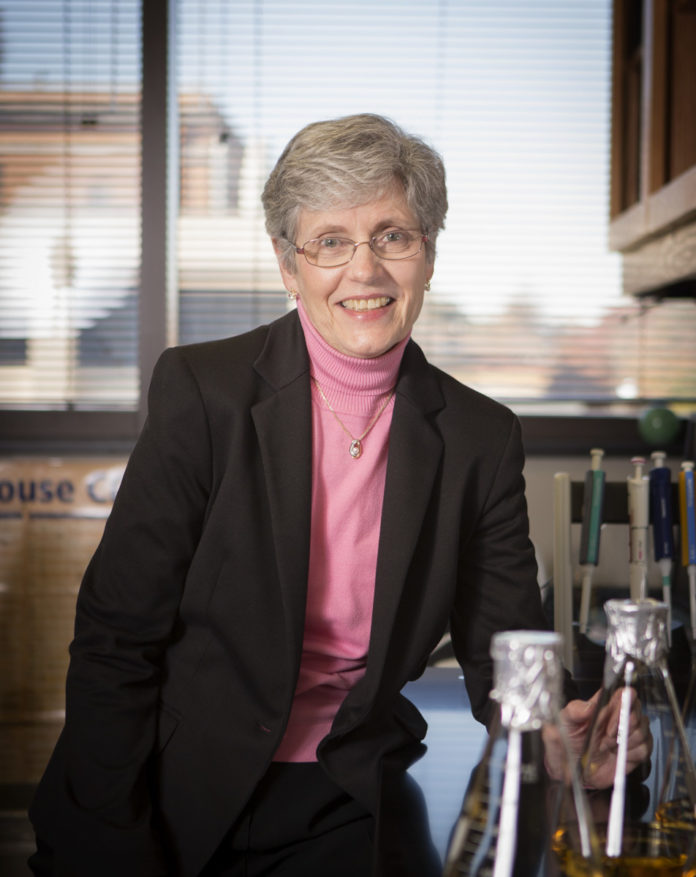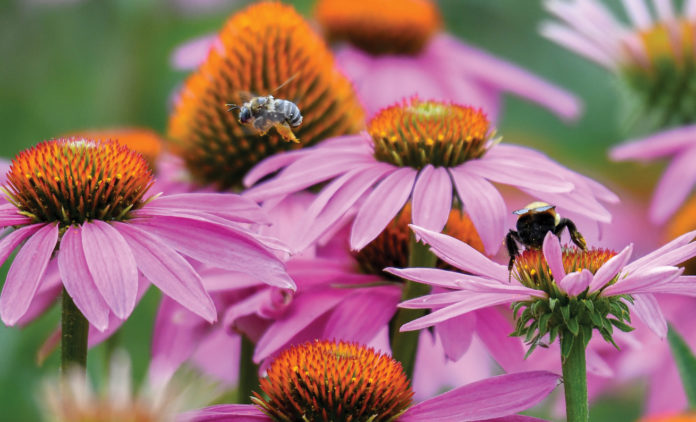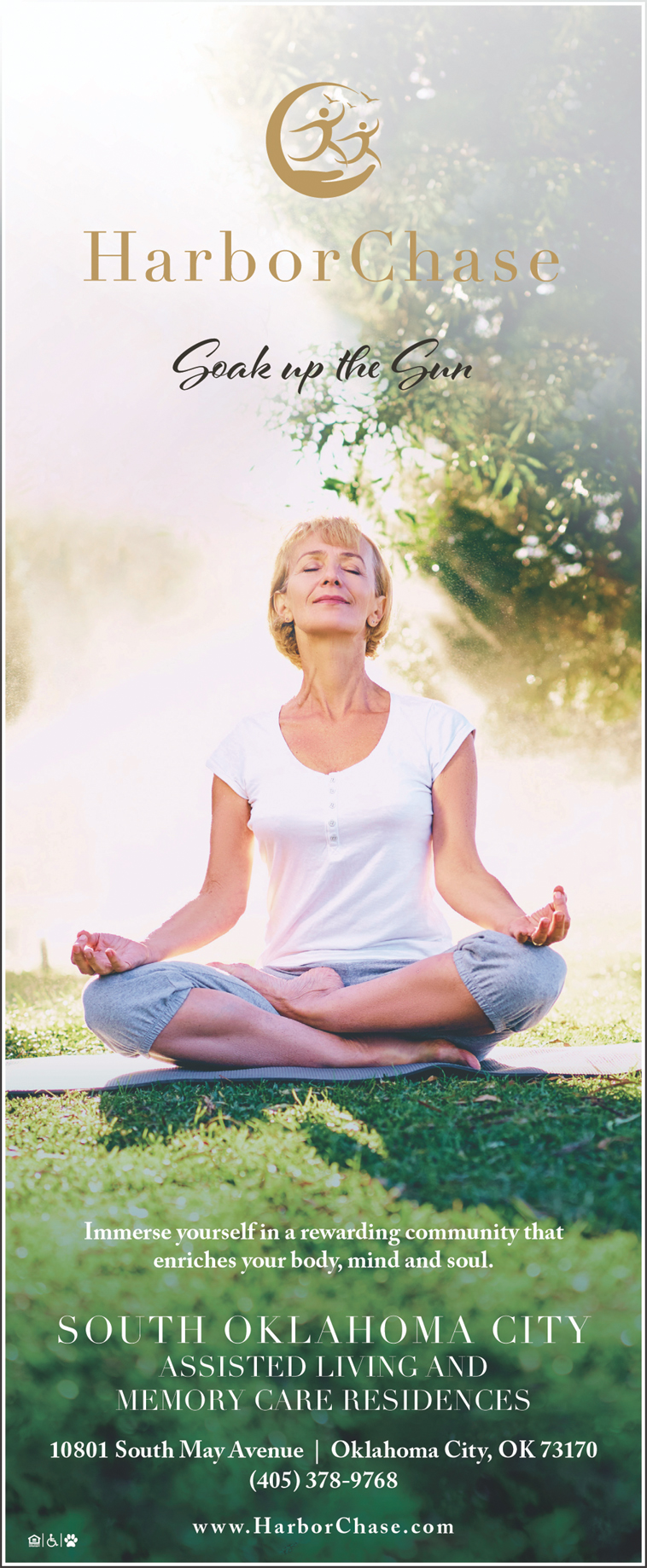At 93 years old, Carlene Pearce remains a very active 29-year volunteer with the Retired and Senior Volunteer Program of Central Oklahoma, a United Way of Central Oklahoma partner. Through RSVP, she volunteers her time with the American Red Cross sewing group and since March, has stitched more than 350 face masks that are distributed in the community to help with COVID-19 safety.
As part of her sewing group, Carlene says she sews 3-6 hours a day, taking at least one day off to tend to her own projects. During the pandemic, she and her group, which typically meets on Thursdays, are working strictly from home. She is currently making masks, but also does a lot of sewing for Veteran’s groups making tote bags, pillows, lap throws, and eyeglass cases.
“I’ve been sewing since I was 14 years old. My grandma taught me how and I love any kind of handcraft. I have to have some sewing project in my hand,” she said.
In the nearly three decades with RSVP of Central Oklahoma, she’s volunteered with the Midwest City Police Department, OU Children’s Hospital, the Hugs Project, and Veteran’s Hospital. She’s logged more than 15,000 hours as a volunteer.
“Volunteering keeps me busy and I know that if it is helping someone else, it brings me joy and a sense of ease,” Carlene said.
Since 1973, RSVP of Central Oklahoma has helped senior adults continue to live with purpose and meaning by connecting them with rewarding community volunteer opportunities, including RSVP’s Provide-A-Ride Senior Transportation Program. RSVP is a partner of Senior Corps and the United Way of Central Oklahoma. To learn more about becoming a volunteer, call Laura McPheeters at 405.605.3110 or visit rsvpokc.org. You can also follow RSVP on Facebook at facebook.com/RSVPokc.
Stitching Helps Volunteer’s Outlook Through Pandemic
OMRF receives $1.75 million to study Covid-19 in Oklahomans
The Oklahoma Medical Research Foundation has received a $1.75 million federal grant to study the impact of the coronavirus on Oklahomans.
Funded by the National Institute of Allergy and Infectious Diseases, the two-year project will seek to understand the immune system’s response to the virus and how that immune response varies in different ethnic groups. Additionally, the study aims to understand if the immune response is protective against future infections — or if it might worsen them.
“OMRF has a strong history and wonderful partnerships throughout the state,” said Linda Thompson, Ph.D., who will help lead the project. “That should enable us to quickly obtain blood samples from those who have been exposed to or infected by the coronavirus.”
The researchers will analyze blood donated by volunteers to understand individuals’ differing immune responses to the virus. The OMRF scientists will be looking for biological clues that might identify those individuals most likely to experience a severe response to coronavirus infection.
As a group, Oklahomans are at a somewhat higher risk for life-threatening complications from Covid-19, as they tend to have higher rates of other conditions associated with greater mortality from coronavirus infection: obesity, diabetes, heart disease and high blood pressure.
OMRF is actively recruiting individuals for Covid-19 antibody testing, especially people with these high-risk conditions, those with Native American heritage, and those who know or suspect they have recovered from the virus. If you’re interested in participating, please call 405-271-7221 or email Jackie-Keyser@omrf.org.
OMRF researchers will also be studying the roles and reactions of antibodies that form in the immune response to infection to the virus known technically as SARS-CoV-2.
“Specifically, we need to know if antibodies help fight the virus,” said Mark Coggeshall, Ph.D., who will also help lead the research. Work will focus on a phenomenon called antibody-dependent enhancement, where instead of protecting people from future infections, antibodies could actually make future infections worse.
“We have to understand all aspects of the body’s immune response and which ones correlate to good health outcomes, and we also need to understand how these vary in different ethnicities,” said Thompson. “This knowledge gap needs to be filled quickly to inform vaccine trials, some of which are already underway.”
The new funding comes as a supplement to a grant awarded to OMRF to study the immune system’s response to anthrax bacteria as part of the NIAID’s Cooperative Centers for Human Immunology.
“Our existing research on anthrax has a developed infrastructure to study immune response to a serious viral infection,” Thompson said. “So, we are set up to start this project without having to develop new methodology. The work can, and will, begin immediately.”
Coggeshall, for one, is eager to start the new project. “Our anthrax work is promising and important, but all research efforts right now should be on SARS-CoV-2 and Covid-19,” he said. “There is no more urgent issue to study in the world, and we will do everything we can to help.”
Fran Drescher and “The Nanny” Reunion
by Nick Thomas

Reassembling a dozen cast members from a popular 90s TV sitcom could pose a challenge for any network, much less an individual. But it was a task Fran Drescher relished. As the nasal voiced star of the hit CBS series “The Nanny,” Drescher co-created and co-produced the show along with then-husband Peter Marc Jacobson.
“Peter came up with the reunion idea for fans stuck at home during isolation and I said right away let’s do it if everyone in the cast is available,” said Drescher from her home in Malibu.
Unable to meet collectively in a studio due to quarantine restrictions, all 12 credited actors who appeared in the 1993 pilot agreed to participate from their home in April in a “Pandemic Table Read” via a Zoom split-screen reading of that first episode, interspersed with cuts from the original broadcast.
In addition to the cast, Jacobson narrated the reading while Ann Hampton Callaway – composer and performer of the show’s catchy theme – opened with a lively rendition on piano.
Drescher admits the reunion brought memories flooding back. “To see everybody and to hear the words again made me miss the show and everyone in it so much. It gave me a lift during this terrible period. Hopefully, it did the same for fans.”
Although nearly 20 years have passed since “The Nanny” first aired, Drescher says she still remembers the pilot and the live studio audience.
“They didn’t know the characters or what to expect from us,” she recalled. “But they quickly got it and were soon anticipating laughing almost before we said the lines. They had never really experienced an outrageous character like Nanny Fran Fine that incorporated elements of Cinderella, Mary Poppins, and The Sound of Music’s Maria.”
Several years after “The Nanny” ended production, Drescher was diagnosed with uterine cancer. She completely recovered, but the experience steered her toward a second career to promote a “whole-body approach to wellness” and form the Cancer Schmancer Movement in 2007 (see www.cancerschmancer.org). More recently, Drescher produced a series of videos called “Corona Care 4 You” featuring interviews with health experts during the pandemic.
A longtime advocate of natural foods and products, Drescher was isolated at home for weeks during the spring like much of the country and used the time to catch up on TV shows, writing, and cleaning. As Nanny Fine, her famous TV character might not have scolded Niles the Butler for using corrosive cleaning products to sanitize the Sheffield’s home in which the 90s Nanny series was set, but today she probably would.
“I use 65% alcohol in a spray bottle with a little water and some peppermint oil which smells nice and has some antimicrobial properties,” she said.
Despite the forced home confinement, Drescher took it largely in her stride.
“I happen to like staying at home, so I don’t get cabin fever easily,” says Drescher who currently stars in the NBC comedy “Indebted.” But for the actress and her former husband with whom she remains close friends, their collaboration on “The Nanny” remains a career milestone. “This was our baby and we remember everything about it.”
Nick Thomas teaches at Auburn University at Montgomery and has written features, columns, and interviews for over 800 newspapers and magazines.
Seniors Can Have Fat Bike Fun
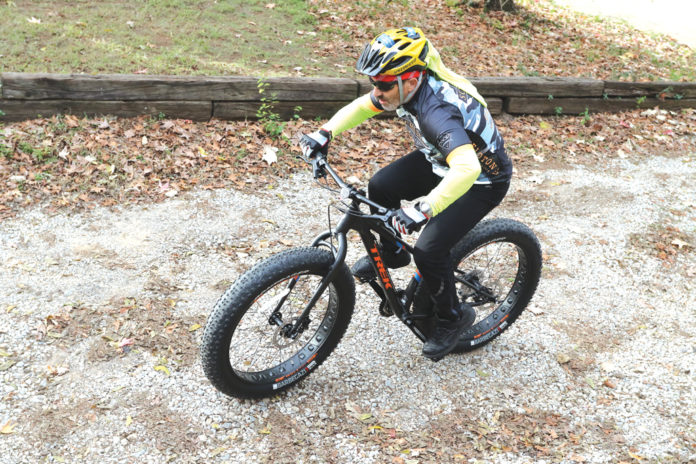
by Darl DeVault

Bicycling is experiencing a resurgence lately because it provides a fun, healthy way to spend time outdoors while riders keep a safe social distance from others. Seniors might consider the comfortable modern Fat Bikes that will bring back memories of bicycles in the 1960s.
Modern fat tire bikes, or Fat Bikes as they are called, are off-road bicycles providing seniors comfortable and smooth riding because of the oversized tires, no matter where they ride. The elderly appreciates these bicycles because they are designed so the rider maintains an upright position with no strain on their back. The handlebars are straight, again easing pressure on the back by not requiring a crouching position over the bike.
Seniors who cycle or want to start riding again might want to test ride a Trek Fat Bike. It is a cross between a light-weight racing bike, with its multi-speed gearing, and a balloon-tired “paperboy” bike of the 1950s.
Many seniors are riding more now because the activity can slow down the progression of aging, deterioration in muscle mass, and much more, according to many medical studies.
Remember your first balloon-tired bike? These new fat tires are almost three times bigger than those balloon tires, which expands regular 2-to- 2.25-inch mountain bike tires to a whopping, comfortable, cruising 4-5 inches. With all that squishy rubber under you, comfort rules the day.
These bikes have the best kind of frames for a senior, the step-through design. This enables the rider to get on and off the bicycle easily. It will perform well during your regular commute or a Sunday country ride. The choice of more gears is generally helpful. If you have a lot of climbing to do and prefer easy pedaling with more revolutions and less resistance for each pedal stroke, the gears provide that option.
With these big tires you achieve a floating sensation when riding along. Fat Bikes are a lot of fun and come with a built-in smile factor – you cannot help but grin to yourself if you like to bicycle.
These Fat Bikes have everything, as manufacturers are now putting real engineering and design technology into them. Racing-bicycle metallurgy, extremely light but strong, means the design allows the Fat tires to dampen road shock and provide stability over rough terrain.
Here is my recent off-road test. I took a Fat Bike off the pavement and up a nearby berm to test the fun.
The added buoyancy of plenty of air between the rim and the ground meant it was simply a matter of powering through the uneven terrain.
My first pass…. I started up the steeply sloping hillside only to discover about two-thirds of the way up that it was sandy soil. The loose soil quickly brought my speed down. When I noticed I was not making good progress I simply applied more power.
I continued my climb. What a feeling, I was on top of the world! I was in control and staying upright while climbing over difficult and uneven terrain.
It made all the difference in the world to my confidence to know that I had climbed the steepest area without using all the gearing available.
The length of the wheelbase, because of extra-size tires, alone adds a dimension of stability. Forget the huge contact patch with the ground; the longer wheelbase gives your ride a squish not available any other way. It seems to even some obstacles out without effort from the rider.
Senior riders can opt for significantly lower tire pressure. Think 15 or 10 psi, or even lower still. This gives the tire some significant squish, and that play translates to more rubber conforming to the trail for serious grip.
I rode back and forth on top of the berm several times, finding new routes, weaving in and out of the trees and around obstacles. I could cut back against the hill and accelerate to support my balance after going around bushes.
I was proud of being able to handle the bike in such tight quarters. I took on harder terrain, happy to come shooting out of the underbrush into the open unscathed.
So far, so good. Now it was time to ride down. I felt I was in control… that I could use the disc brakes and if necessary, the whole rear tire in slowing down. Coming down was a pleasure, the control of the bike suddenly became all mine again. Slaloming on the 4-inch fat tires was a breeze.
I felt I had more control over the bike descending than at any other time, especially with the longer wheelbase. I knew that if I kept my center of gravity low and the bike centered beneath me, those sturdy fat tires could take any punishment. This confidence allowed me to steer right where I wanted it to go.
While Fat Biking over changing terrain takes coordination, and quickness, it gives the cyclist the elation of triumphing over unpredictable conditions and challenges. Finally, it instills a “can-do” attitude that is as comfortable as a bicycle can get.
If you ride, please buy a helmet, and wear it. Today’s helmets are adjustable and comfortable to wear while the air flow through the vents keep your head cool.
Senior cyclists owning the new-generation Fat Bike can also try out what they term Gravel Rides, taking backcountry unpaved scenic routes on their new contraptions.
Imagine a bicycle with bigger than a paperboy balloon tires by two and a half times taking the tension off major joints, and you have the start of what you might find as the inspiration to cycle more.
INSECT CONSIDERED EXTIRPATED FROM OKLAHOMA IS DISCOVERED AT THE OKC ZOO
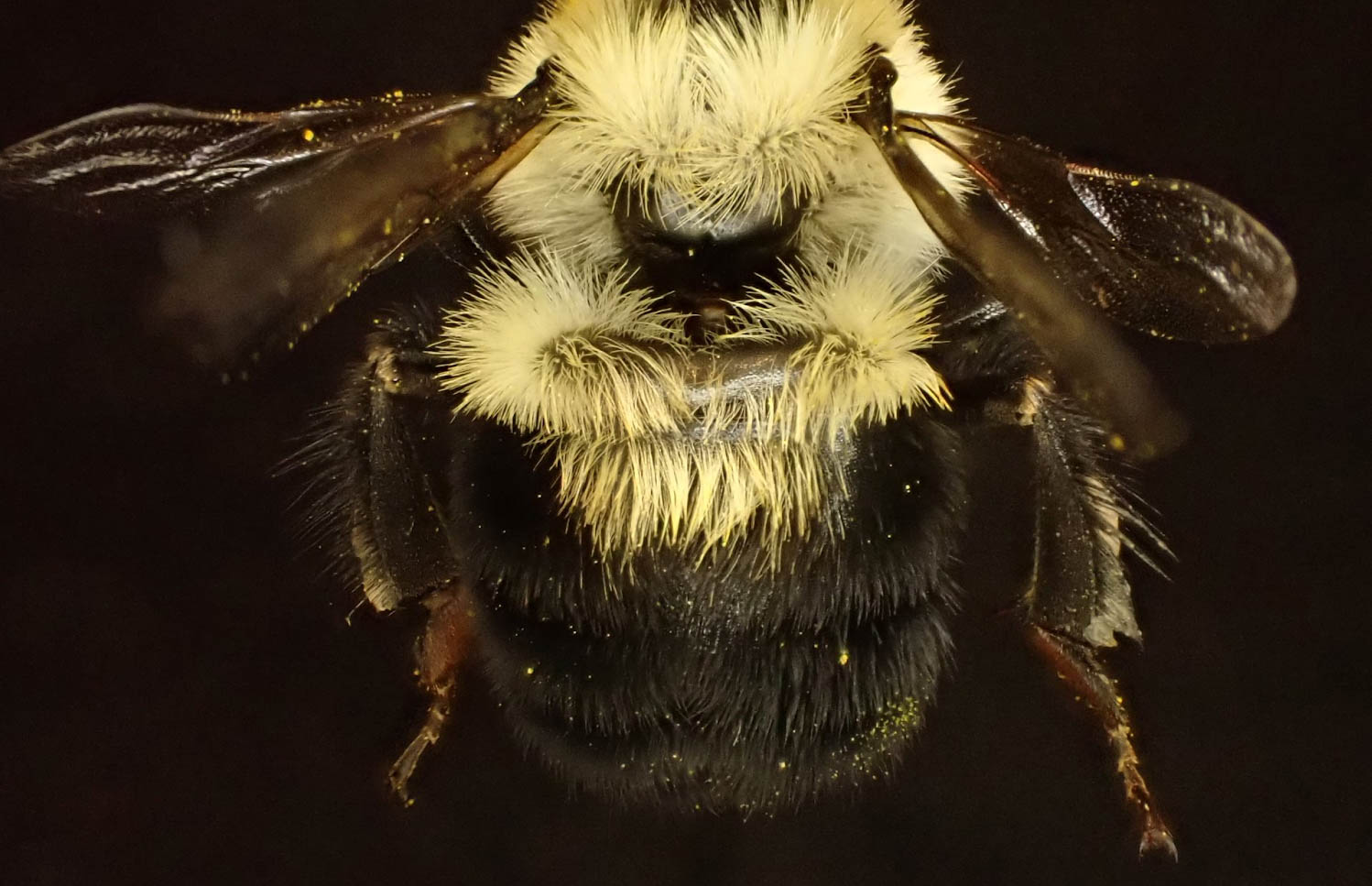
There is a buzz of excitement at the Oklahoma City Zoo and Botanical Garden with the recent discovery of a unique pollinator, the two-spotted bumblebee, Bombus bimaculatus, at the OKC Zoo. This species of bumblebee has not been found in Oklahoma since 1999.
Bee researcher, José Montalva, recognized the two-spotted bumblebee earlier this month on Zoo grounds. A graduate student at the University of Oklahoma and an instructor at East Central University, Montalva is conducting an ongoing survey at the OKC Zoo to study native bees that inhabit the park and record which floral resources they use, and what other environmental factors (biotic and abiotic) benefit bees. To date, Montalva has recorded almost 40 species of native bees at the Zoo. This study is made possible by a grant from the Kirkpatrick Foundation and the Department of Biological and Environmental Sciences at East Central University.
“What a thrill to learn that our funding dollars have led to the identification of a favorite creature vital to the future of Oklahoma ecology,” said Louisa McCune, Kirkpatrick Foundation’s executive director. “Bumblebees have needed research support like never before, so that makes it especially wonderful to see the Oklahoma City Zoo have such a breakthrough discovery.”
Oklahoma’s diverse bioregions provide habitat to a variety of bee species. At one time, the state was home to ten species of bumblebees including the two-spotted bumblebee but a study completed in 2015 by L. Figueroa and E. Bergey identified only four species of bumblebee thriving here.
“Finding this bumblebee back in Oklahoma after two decades is a great indication that the OKC Zoo provides vital habitat for native species,” said Rebecca Snyder, OKC Zoo’s director of conservation and science. “The Zoo is committed to helping increase pollinator populations through research and local conservation efforts aimed at creating more habitat. The Zoo also hopes to inspire people to care about the future of these important insects.”
Bumblebees are a social, charismatic species of bee that are found on almost every continent. The two-spotted bumblebee is fuzzy with a mostly yellow thorax with patches of black hairs at the base of its wings. They also have a distinct two-spotted yellow patch of hair on their second abdominal area. These valuable insects perform the critical role of pollinating the world’s flowering plants and crops and without them our ecosystems and economies would be in trouble. Worldwide bumblebee populations are experiencing dramatic population declines due to habitat fragmentation, pesticides and climate events.
The OKC Zoo currently maintains four on-site beehives. The bees contribute to the pollination process across the Zoo’s 100+ acres, keeping the numerous designated horticultural displays including the Zoo’s outdoor butterfly garden – the largest in Oklahoma – naturally vibrant and thriving. All four beehives are located in an undeveloped area south of the elephant habitat, away from walking paths and animal habitats accessible to guests.
The Oklahoma City Zoo is open daily at 8 a.m. and advance tickets are required for all guests and ZOOfriends members. Tickets can be purchased at http://www.okczoo.org/tickets and are limited each day to ensure adequate social distancing between guests. Some of the Zoo’s indoor habitats are still closed to minimize potential transmission of COVID-19. The Zoo is open daily from 8 a.m. to 5 p.m. now through Labor Day, Monday, September 7, 2020.
Located at the crossroads of I-44 and I-35, the OKC Zoo is a proud member of the Association of Zoos and Aquariums, the American Alliance of Museums, Oklahoma City’s Adventure District and an Adventure Road partner. Regular admission is $12 for adults and $9 for children ages 3-11 and seniors ages 65 and over. Children two and under are admitted free. Stay up-to-date with the Zoo on Facebook, Twitter and Instagram and by visiting Our Stories. Zoo fans can support the OKC Zoo by becoming Oklahoma Zoological Society members at ZOOfriends.org. To learn more about these and other happenings, call (405) 424-3344 or visit okczoo.org.
Zoom zoom: RN student stays strong

story and photo by Bobby Anderson, Staff Writer
Three kids, final exams and a 12-hour shift at the hospital in front of her.
Lauri Gosney has a way to deal with all of it.
She cranks up the music and let’s loose.
“I can’t not dance,” the Oklahoma City Community College nursing student said. “It’s my happy place.”
Gosney first went to college at Rose State where she worked as a lifeguard and taught senior citizen water aerobics.
The Zumba craze happened shortly after she had her kids. One class and she was hooked.
“I tried my first class in March of 2009 and started teaching in May 2009 and have taught ever since,” she said. “I just love to dance and I have absolutely no shame as far as dancing goes.”
And she’s helped hundreds get through quarantine and now social distancing through her online Zumba workouts via Zoom.
Gosney teaches classes at The Health Club in Norman, which has opened back up with distancing restrictions.
But for anyone who needs them, Gosney hosts online classes from her home.
An active group of friends and followers on Facebook find out her Zoom times weekly and attend from the comfort of their own home, garage, park or wherever.
“This is what I generally like to tell people: if you’re worried about what you you look like or about looking dumb just don’t care,” said Gosney, who loves to dance so much she once taught a class at 8:30 p.m. before having her baby six hours later. “We’re all working out having fun and enjoying dancing. No one cares about what the other people look like.”
“Focus on you because that’s what it should be about – your fitness or your stress relief or your enjoyment. If you enjoy what you’re doing you’re going to look cool at what you’re doing and people will want to do it with you.”
Gosney tells people they can turn off their own video and just watch her. Even she’s too busy to focus on 30 or more frames of people individually.
“It is a nice thing to get people a chance to try it who have been scared to try,” she said. “If I can see someone that’s new to a class I can break it down a little more.”
Gosney says she has the occasional participant Venmo her $5 or $10 but it’s not what she does it for.
“The amount of money I could make doing this is not enough to push it,” she said. “I just enjoy doing it. It’s a hobby for me. I like to dance. I’d rather just dance and people come rather than try to make $30 off a class.”
“I feel like I have a following. People have been coming to my class for 10 years.”
Gosney graduated from Harrah High School before heading to Rose State to play soccer. Her soccer coach also happened to be the boss at the college pool.
She would spend 10 years as a lifeguard total, even earning lifeguard of the Year for the entire southwest region twice.
“I’ve got that competitive nature so any competition I’m going to try really hard,” she said.
Now with kids ages 14, 11 and eight, her next competition is with herself and nursing school.
A stay-at-home mom for 14 years, Gosney wanted to find a career with security. She settled on nursing.
“It kind of was more of a necessity,” she explained. “I found out I was pretty good at it.”
At the hospital, Gosney works on a critical care floor taking care of anywhere between eight and 12 patients as a certified nursing assistant.
“I was definitely shocked at how much work there is,” she said. “I don’t sit down a lot. It’s go, go, go, go but I kind of like it. It makes the day go by so fast.”
It’s fast-paced and good experience.
I definitely wanted some experience,” she said. “I had never even worked in a healthcare setting and if I was going to become a nurse I wanted that experience and just be able to get my foot in the door as far as what kind of nurse I would like to be. And using the skills I’ve learned so far at the patient bedside setting will help me be more confident as a nurse.”
Physician Housecalls Announces New Psychiatric Services
Oklahoma-based health care company expands offerings for homebound patients
Physician Housecalls, a medical provider specializing in home-based primary care for chronically ill and elderly patients, will now offer psychiatric services to clients in Oklahoma and Kansas.
“Our providers are trained and experienced in treating diseases of the body, but like most primary care practitioners, they have little experience with mental health issues,” said Cindy Longanacre, co-founder, owner and vice president of Physician Housecalls. “By adding mental health services to our established primary care offerings, we’re better able to address diverse patient needs.”
Nurse practitioner Rolanda Davis will lead the company’s psychiatric care efforts. Davis treats diseases like dementia, Alzheimer’s, depression, bipolar disorder and schizophrenia — she can also prescribe medications and provide counseling services, both through in-person visits and telehealth.
Davis said the need for psychiatric services has risen as part of the global health crisis.
“Depression and anxiety rates are increasing. Many people are isolated from their families, and they’re unsure what the world will look like from one day to the next,” she said. “Now more than ever, we all need to focus on our mental health. I look forward to working with patients in Oklahoma and Kansas to address these issues and hopefully provide them with a sense of calm and relief.”
Physician Housecalls is actively hiring psychiatric nurse providers in its operating areas to accommodate the growing need. For more information, visit www.housecallsok.com.
Founded in 2012, Physician Housecalls provides home based primary care, chronic care management, care plan oversight, transition management services, wellness visits and behavioral health integration services to patients in post-acute facilities and private homes across Oklahoma and Kansas.
Flu shot more important than ever, experts say
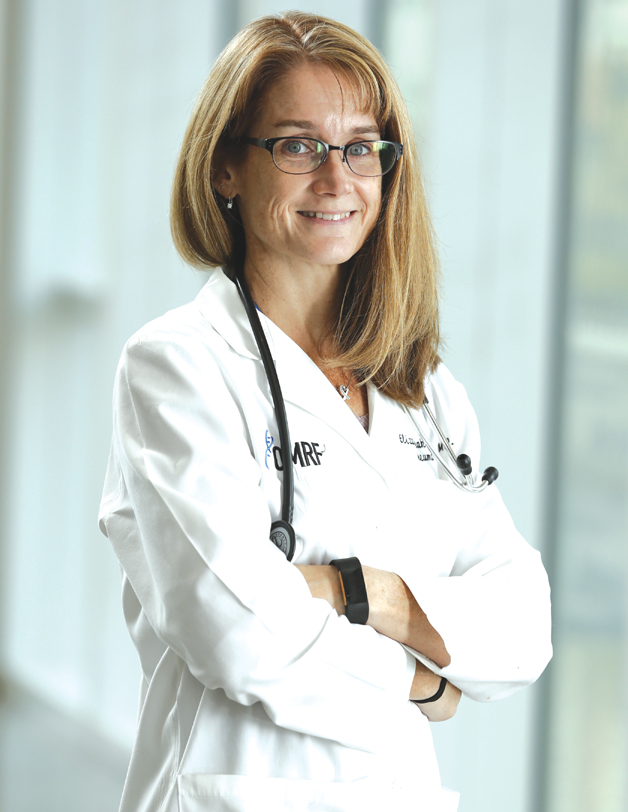
Getting the annual flu shot is always important. But this year, it might be essential.
The SARS-Cov-2 coronavirus is surging throughout the state and much of the country, and many health experts are predicting an epidemic-level wave during the fall and winter months, right in the heart of the annual flu season in the U.S.
“That timing could be potentially disastrous for a number of reasons, but the most obvious is that the combined fight against coronavirus and influenza is potentially more than our healthcare system can handle,” said Oklahoma Medical Research Foundation physician-scientist Eliza Chakravarty, M.D.
Since the coronavirus first started spreading across the U.S. earlier this year, it has resulted in almost 2.3 million confirmed cases and 120,000 deaths, according to the Centers for Disease Control and Prevention as of June 22. Those numbers – and the associated strain on hospitals and healthcare resources – could be compounded by the flu, which in the during the 2019-20 season infected as many as 56 million Americans, with 740,000 hospitalizations and nearly 62,000 deaths, according to preliminary CDC data.
“Efforts taken with the shutdown, like socal distancing and wearing masks, have kept rates low enough to keep coronavirus patients separated from others who need other routine care,” Chakravarty said. “Add another outbreak and toss in a fast-spreading virus like the flu, and all that progress could go out the window.”
Chakravarty also worries about people getting exposed to both viruses. “Each of them is deadly enough individually, but we know they are especially dangerous for those with compromised immunity or lung function,” she said. “You don’t want to catch both if you’re already compromised.”
The good news is that there are ways to avoid this nightmare scenario, said OMRF President Stephen Prescott, M.D.
“We have to maintain already sensible practices, like physical distancing, wearing masks, and washing our hands,” said Prescott, a physician and researcher. “An obvious additional step is to get the flu shot. Even if you don’t normally get one, this is the time to do it.”
Flu shorts are generally inexpensive or free, and drive-thru vaccinations may become widely available. And while the shots are far from perfect, typically providing between 40 and 60 percent protection, “Some protection is better than none,” said Prescott.
Even if you contract the flu after receiving your shot, vaccination often leads to a milder case, said Chakravarty.
“A less-severe version is always a good thing, but now it might also save you or a loved one a trip to the hospital where coronavirus exposure is possible,” she said. “So, the bottom line is that flu shots save lives – this year, maybe more than ever.”
Home at HarborChase
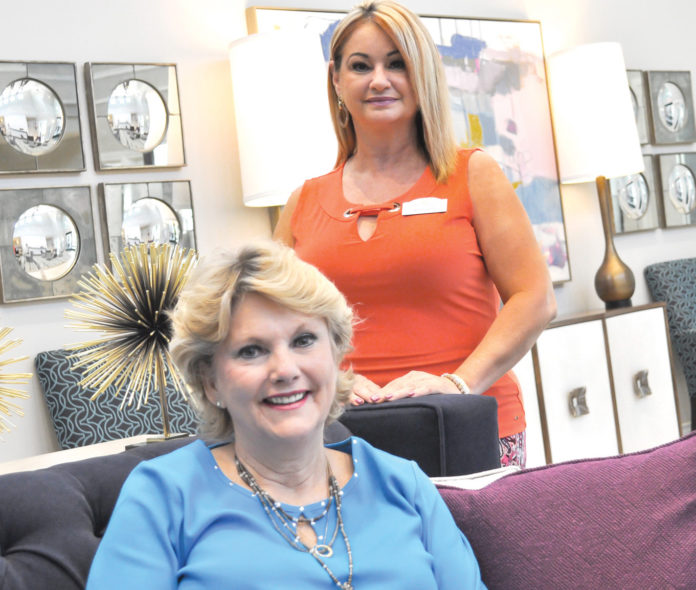
story and photo by Bobby Anderson, Staff Writer
Simply stunning.
No other words quite describe the feeling of walking into HarborChase of South Oklahoma City.
Visually remarkable, the brand new assisted living and memory care residence located at 10801 S May Ave is a treat for all five senses.
Depending on the hour or day, you might hear the smooth gospel stylings of pianist Gatha Graham or the laughter from the main dining room.
In the afternoon, the smell of freshly popped popcorn wafts through the air.
Wood-fired pizza directly out of the oven, crab cakes or a prime rib dinner cooked to order await to be enjoyed downstairs or in the privacy of your residence with room service.
Amenities abound at Oklahoma City’s newest senior residence offering.
“It’s amazing,” says Executive Director Willena Ferguson while walking through the finely-appointed property, which is also licensed as a hotel by the state.
After spending the past 15 years in senior living, Ferguson has spent the last 14 months bringing HarborChase to life in the metro.
Residents began moving in February 29 prior to the recent quarantine.
Vero Beach, Fla. – based Harbor Retirement Associates brings the luxury living option to Oklahoma.
HRA operates more than 35 communities in eight states and is partnering on the construction of even more communities in seven additional states. HRA manages over $150 million in revenue and approximately $1 billion in assets while employing 2,000 associates.
HarborChase of South Oklahoma City is now accepting new residents and is proud that through June, the residence remained entirely Coved-free with no residents or employees testing positive.
That’s thanks to a stringent entry criteria as well an extensive daily sanitization regimen.
Temperature checks are completed three times daily. No one can enter the facility without having their temperature scanned.
The building is disinfected twice daily.
The Oklahoma Room is a crowning jewel at the residence. The nearly 1,900-square foot safe room is rated by FEMA to withstand 500-mile-per-hour winds. An enclosed generator ensures power and a full-stocked pantry provides food and water for residents for up to three days in the case of disaster.
Some $400,000 worth of concrete – nearly two-feet thick – protects residents as does the bulletproof glass and rolling steel hurricane shutters.
“It’s really kind of cool some of the amenities they put into the building,” said Ferguson, who also noted the space serves as a movie theatre room, and a chapel.
HarborChase offers both one and two-bedroom assisted living options.
From the very first day a resident moves into HarborChase, they are a familiar name and face, treated as a respected and cherished member of the family. Ferguson and her staff are dedicated to providing an ongoing feeling of connection, communication, comfort and caring. Upon arrival, a unique “Silhouette of My Life” profile for each individual resident is created to ensure that their wants, needs and desires are being met.
This customized profile allows care partners to create fun activities and programs based around residents’ favorite pastimes, foods and memories.
Each day, care partners offer respectful assistance with walking, dressing, grooming and more. You’ll rest easy knowing that your loved one’s medical needs are provided for by a caring and compassionate team of licensed nurses and medication assistants.
In order to help nurture their independence, your loved one will receive the personalized level of care and support they need with friendly supportive services that truly make life easier and more enjoyable. An active and purposeful lifestyle awaits your loved one at HarborChase.
A dedicated memory care unit is also built in.
Harbor Chase’s acclaimed Memory Care neighborhood is a safe, serene and loving harbor for residents and their families.
A putting green sits in the interior courtyard next to the cabana. A family of ducks seems to enjoy the fountains and raised, self-watering flower beds that are being installed next to their float pool.
An art studio and fitness gym are also on site.
Business Office Manager, Tia Crittenden, has worked with Ferguson for 10 years now, following her along her journey.
“I have a really huge loyalty to Willie. She’s an amazing director,” Crittenden said. “Her standards are very high.”
Ferguson smiles and explains it all comes down to setting the bar high and building lasting relationships.
“I love this population,” Ferguson said.
And there’s no doubt this population will love HarborChase.
HarborChase is located at 10801 S May Ave, Oklahoma City, OK 73170. Call (405) 429-8386 for more information or visit: www.harborchase.com




